Original 'La reve' color lithograph by Charles Dufresne. Lithograph printed from an original painting made by the author in France, circa 1923. Published by Mourlot in Collection Pierre Levy in 1971, Paris. Framed and signed in the stone. In good original condition, with minor wear consistent with age and use, preserving a beautiful patina. About the Artist: Georges-Charles Dufresne (23 November 1876, Millemont - 8 August 1938, La Seyne-sur-Mer) was a French painter, engraver, sculptor and decorator. He came from a family of sailors and fishermen that originated in Granville. He left school to study engraving, then went to Paris, where he enrolled at the École nationale supérieure des Beaux-Arts and found a position in the workshops of Hubert Ponscarme [fr]. Later, he became an assistant to the sculptor and medalist, Alexandre Charpentier. He was more attracted to painting, however, and began making pastels at Café-chantants and circuses and guinguettes, in the manner of Toulouse-Lautrec. His first exhibition came at the Salon of the Société Nationale des Beaux-Arts in 1903. Following that, he and his close friend, the American engraver Herbert Lespinasse (1884-1972), went on an extended trip to Italy and stayed at the Villa Médicis. In 1908, he spent some working in Brittany at the invitation of Jean Frélaut. He was mobilized at the beginning of World War I. After being gassed, he was transferred to the Section de Camouflage, under the command of an old acquaintance, the painter André Dunoyer de Segonzac. During this time, he managed to paint some Cubist scenes of the war. In the late 1920s, he became a teacher at the "Académie scandinave", an art school established with Scandinavian patronage that operated from 1919 to 1935. In 1936, he created more tapestry designs for the Mobilier National. That same year, he painted decorations in the foyer of the Palais de Chaillot. His last commission, completed just before his death, involved five large murals for the "Faculté de pharmacie de Paris", a division of Paris Descartes University. A major retrospective of his work was presented at the Venice Biennale shortly after his death. Fernand Mourlot: Fernand Mourlot was born on 5 April 1895 in Paris, France. He was the sixth of nine children of Jules Mourlot and Clemence Gadras. In 1911, at the age of 16, he was admitted as a student to the École nationale supérieure des arts décoratifs where he studied drawing. After his studies he joined his father and older brothers in the family business, the "Imprimerie J. Mourlot". In 1914, Jules Mourlot, through the sale of Russian bonds, would begin expanding the studios, eventually opening a second location on rue St. Maur and purchasing Imprimerie Bataille on rue de Chabrol. That year, the three eldest Mourlot brothers were also drafted into the French Army and sent to the front. Paul, the oldest brother, would be killed shortly after the start of the war. Georges and Fernand would remain in the army through 1918 and would both participate in many battles including the Battle of Verdun. While at the front, they would learn in 1917 of the death of their mother Clemence. Upon their return, they rejoined their father in the business. Georges, the eldest, would head the operations of the studios, while Fernand would concentrate on the artistic side and business development. At the death of their father in 1921, the name of the studios was changed to "Mourlot Freres" (Mourlot Brothers), with Georges and Fernand heading the company, while the other siblings became minority holders in the business. n 1923, Mourlot won a contract to produce an original lithographic poster to promote an exhibition of French Modern Art in Copenhagen, Denmark. A few years later, through the friendship he had developed with the writer Georges Duhamel, himself a former veteran of World War I, Fernand Mourlot met the painter Maurice de Vlaminck. In 1926 the three men worked closely on the production of what became the first of many illustrated books printed by Mourlot Studios. 1930 marked the start of another important and long lasting cooperation: the one between Mourlot and the director of the French National Museums. That year, the Studios printed a poster for the hundred year anniversary of Romanticism and another poster to promote the retrospective of Delacroix's work at the Musée du Louvre. These were followed in 1932 by a poster for an exhibition of Édouard Manet's work at the Musée de l'Orangerie, and in 1934, a poster of Honoré Daumier's work at the Bibliothèque Nationale. By 1937, Mourlot Studios had become the largest printer of artistic posters and was often hired by French and foreign museums, such as the Tate Gallery, to produce high quality posters for their upcoming exhibitions. That year, two more historically important posters for Pierre Bonnard and Henri Matisse would be created for the exhibition of the Art Independent at the Petit Palais. They would lead to a crucial meeting between Mourlot and Matisse and would usher the next chapter in the history of the Mourlot Studios.
Originale Farblithographie "La reve" von Charles Dufresne. Lithographie nach einem Originalgemälde des Autors in Frankreich, ca. 1923. Veröffentlicht von Mourlot in der Sammlung Pierre Levy im Jahr 1971, Paris. Gerahmt und im Stein signiert. In gutem Originalzustand, mit geringen alters- und gebrauchsbedingten Abnutzungserscheinungen, die eine schöne Patina erhalten haben. Über den Künstler: Georges-Charles Dufresne (23. November 1876, Millemont - 8. August 1938, La Seyne-sur-Mer) war ein französischer Maler, Graveur, Bildhauer und Dekorateur. Er entstammt einer aus Granville stammenden Familie von Seeleuten und Fischern. Er verließ die Schule, um Gravur zu studieren, und ging dann nach Paris, wo er sich an der École nationale supérieure des Beaux-Arts einschrieb und eine Stelle in den Werkstätten von Hubert Ponscarme [fr] fand. Später wird er Assistent des Bildhauers und Medailleurs Alexandre Charpentier. Er fühlt sich jedoch mehr zur Malerei hingezogen und beginnt in Café-chantants, Zirkussen und Guinguettes Pastelle in der Art von Toulouse-Lautrec zu malen. Seine erste Ausstellung findet 1903 auf dem Salon der Société Nationale des Beaux-Arts statt. Anschließend unternimmt er zusammen mit seinem engen Freund, dem amerikanischen Graveur Herbert Lespinasse (1884-1972), eine ausgedehnte Reise nach Italien und wohnt in der Villa Médicis. Im Jahr 1908 verbringt er auf Einladung von Jean Frélaut einen Arbeitsaufenthalt in der Bretagne. Zu Beginn des Ersten Weltkriegs wurde er mobilisiert. Nachdem er vergast worden war, wurde er in die Section de Camouflage versetzt, unter dem Kommando eines alten Bekannten, des Malers André Dunoyer de Segonzac. In dieser Zeit gelingt es ihm, einige kubistische Szenen des Krieges zu malen. Ende der 1920er Jahre wird er Lehrer an der "Académie scandinave", einer unter skandinavischer Schirmherrschaft gegründeten Kunstschule, die von 1919 bis 1935 besteht. Im Jahr 1936 entwirft er weitere Wandteppiche für das Mobilier National. Im selben Jahr malte er Dekorationen für das Foyer des Palais de Chaillot. Sein letzter Auftrag, der kurz vor seinem Tod abgeschlossen wurde, betraf fünf große Wandgemälde für die "Faculté de pharmacie de Paris", eine Abteilung der Pariser Descartes-Universität. Eine große Retrospektive seines Werks wurde kurz nach seinem Tod auf der Biennale von Venedig gezeigt. Fernand Mourlot: Fernand Mourlot wurde am 5. April 1895 in Paris, Frankreich, geboren. Er war das sechste von neun Kindern von Jules Mourlot und Clemence Gadras. Im Jahr 1911, im Alter von 16 Jahren, wurde er an der École nationale supérieure des arts décoratifs aufgenommen, wo er Zeichnen studierte. Nach seinem Studium arbeitet er mit seinem Vater und seinen älteren Brüdern im Familienunternehmen, der "Imprimerie J. Mourlot". Im Jahr 1914 begann Jules Mourlot durch den Verkauf russischer Anleihen mit der Erweiterung der Ateliers und eröffnete schließlich einen zweiten Standort in der Rue St. Maur und kaufte die Imprimerie Bataille in der Rue de Chabrol. In diesem Jahr wurden auch die drei ältesten Mourlot-Brüder zur französischen Armee eingezogen und an die Front geschickt. Paul, der älteste Bruder, fiel kurz nach Beginn des Krieges. Georges und Fernand blieben bis 1918 in der Armee und nahmen an vielen Schlachten teil, unter anderem an der Schlacht von Verdun. Während sie an der Front waren, erfuhren sie 1917 vom Tod ihrer Mutter Clemence. Nach ihrer Rückkehr arbeiteten sie wieder im Geschäft ihres Vaters mit. Georges, der Älteste, leitet den Betrieb der Studios, während Fernand sich auf die künstlerische Seite und die Geschäftsentwicklung konzentriert. Nach dem Tod des Vaters im Jahr 1921 wurde der Name des Ateliers in "Mourlot Freres" (Gebrüder Mourlot) geändert, wobei Georges und Fernand das Unternehmen leiteten, während die anderen Geschwister Minderheitsaktionäre wurden. 1923 erhielt Mourlot den Auftrag, ein Original-Lithografieplakat für eine Ausstellung moderner französischer Kunst in Kopenhagen herzustellen. Einige Jahre später lernte Fernand Mourlot durch seine Freundschaft mit dem Schriftsteller Georges Duhamel, selbst ein ehemaliger Veteran des Ersten Weltkriegs, den Maler Maurice de Vlaminck kennen. Im Jahr 1926 arbeiten die drei eng zusammen, um den ersten von zahlreichen Bildbänden zu produzieren, die von den Mourlot Studios gedruckt werden. 1930 begann eine weitere wichtige und dauerhafte Zusammenarbeit: die zwischen Mourlot und dem Direktor der französischen Nationalmuseen. In diesem Jahr druckten die Studios ein Plakat zum hundertjährigen Bestehen der Romantik und ein weiteres Plakat zur Förderung der Retrospektive des Werks von Delacroix im Musée du Louvre. Es folgten 1932 ein Plakat für eine Ausstellung von Édouard Manet im Musée de l'Orangerie und 1934 ein Plakat für das Werk von Honoré Daumier in der Bibliothèque Nationale. Bis 1937 waren die Mourlot Studios zum größten Drucker von Kunstplakaten geworden und wurden häufig von französischen und ausländischen Museen wie der Tate Gallery beauftragt, hochwertige Plakate für ihre bevorstehenden Ausstellungen zu produzieren. In diesem Jahr entstehen zwei weitere historisch wichtige Plakate für Pierre Bonnard und Henri Matisse für die Ausstellung der Art Independent im Petit Palais. Sie führten zu einem entscheidenden Treffen zwischen Mourlot und Matisse und leiteten das nächste Kapitel in der Geschichte der Mourlot Studios ein.
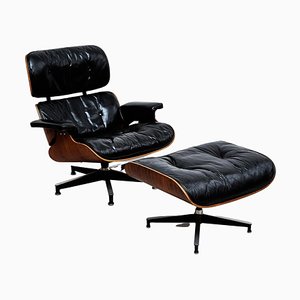
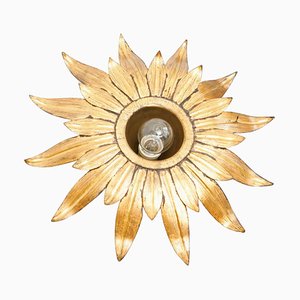
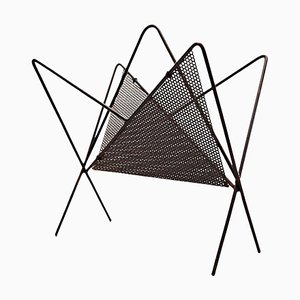


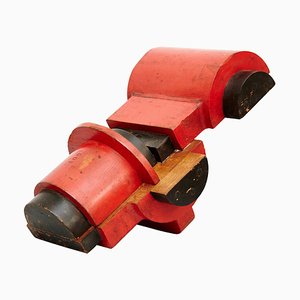
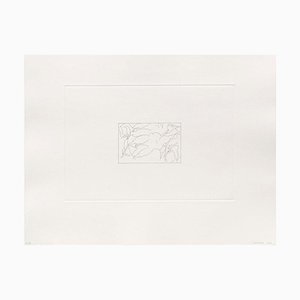
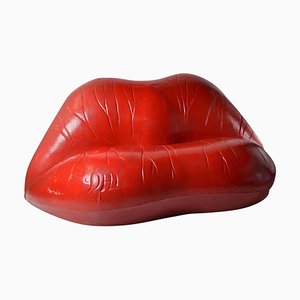

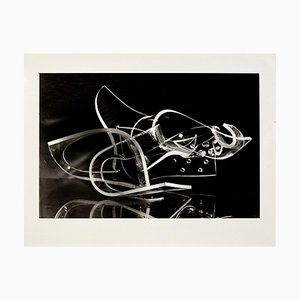
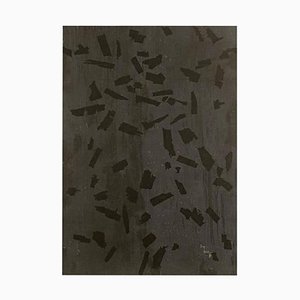
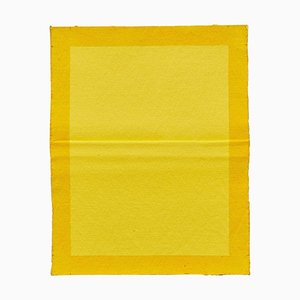
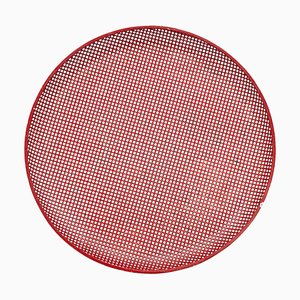
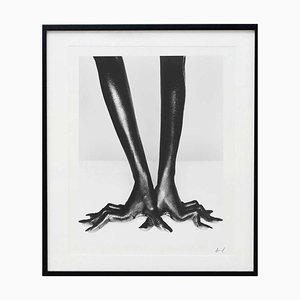

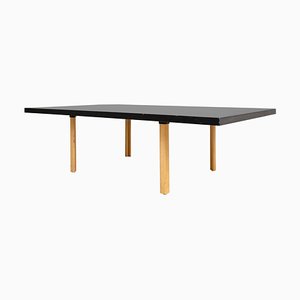
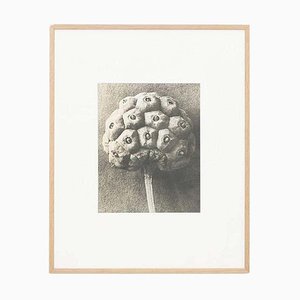



Schreiben Sie uns
Ein Angebot machen
Uns ist aufgefallen, dass Sie neu bei Pamono sind!
Bitte akzeptieren Sie die Allgemeinen Geschäftsbedingungen und die Datenschutzerklärung
Schreiben Sie uns
Ein Angebot machen
Fast geschafft!
Um die Kommunikation einsehen und verfolgen zu können, schließen Sie bitte Ihre Registrierung ab. Um mit Ihrem Angebot auf der Plattform fortzufahren, schließen Sie bitte die Registrierung ab.Erfolgreich
Vielen Dank für Ihre Anfrage! Unser Team meldet sich in Kürze bei Ihnen zurück.
Wenn Sie Architekt*in oder Inneneinrichter*in sind, bewerben Sie sich hier um dem Trage Program beizutreten.